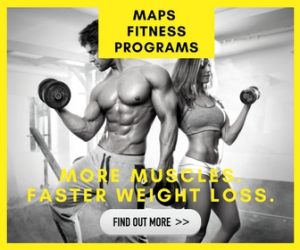
The Biggest Lies the Fitness Industry Told You and WHY
Mar 28, 2018 mindpumpAs a teen growing up in the 90’s the biggest source of information when it came to muscle building came from the bodybuilding magazines. Muscle and Fitness, Flex and Ironman were my go-to publications for the latest research on training, diet and supplementation. I studied these sources carefully and applied their advice religiously to try to build a strong and muscular physique.
I started working professionally as a personal trainer at the age of 18 at the local 24 Hour Fitness. They provided me with my first fitness certification and the information I learned somewhat mirrored what I had read the previous years in the muscle magazines which only solidified what I had already “known” to be true. Eventually I took this information as “common knowledge” and never questioned it. Common knowledge is information that is believed to be so true and accurate that no one even considers challenging it.
As I progressed in my fitness career and managed gyms and then owned a small personal training facility I couldn’t help but notice that how my clients responded to exercise and nutrition would many times conflict with some of the common knowledge I had just accepted to be factual. Although I had a deep passion for fitness, I had a deeper passion for people and through this passion I was eventually forced to reconsider some of the advice I was giving. Once I decided to re-think my approach and I started researching my old beliefs I was shocked to discover just how incorrect my advice had been. It was startling at first, but then it became addicting as I looked at EVERYTHING I took for granted as truth. Little by little I peeled away the fitness façade to reveal REAL fitness truth. As I applied this new knowledge to my clients and myself I was blown away. People got more fit, leaner and stronger FASTER and EASIER.
Below I list the top 3 fitness myths that were considered common knowledge for DECADES and the reason why the fitness industry made these myths up in the first place.

Over and over again the muscle magazines would recommend that fitness enthusiasts eat at least 6 meals a day. They said regular protein feedings were needed to prevent catabolism (muscle wasting) and to promote anabolism (muscle building). When I became a trainer my 24 Hour Fitness APEX certification told us that eating small meals would tell the body that food was plentiful therefore it could “speed up its metabolism” and if someone skipped meals the body would go into “starvation mode” where it would try to store as much body fat as possible.
I used to walk around with Tupperware containers of food to ensure I never went into starvation mode and to promote muscle building. Of course I was a super hardcore trainer and super disciplined but my clients weren’t. Instead they ate their regular 2-3 meals and consumed 2-3 shakes or bars a day to replace the meals they didn’t carry around. Lol…if I had only known…
The truth is that whether you eat 6 meals a day or 2 it literally DOES NOT MATTER. Starvation mode takes days of fasting to achieve and could not happen because someone skipped a meal. Current scientific study also shows incredible benefit from fasting. In fact in the context of inflammation it may even be a bad idea to eat super frequently.
Once I learned the truth the reason this myth was repeated by every publication and even by my personal training certification became crystal clear. Selling people the idea of small meals usually meant people would need to supplement with bars and shakes. In fact as this myth grew stronger and became more accepted the meal replacement supplement market exploded. It worked and it worked well and this strategy of selling an idea that then required a supplement purchase became a theme in the fitness industry. This brings me to the second biggest myth…

This myth really gained steam right around the early 90’s. We were told that post workout there was a muscle building and fat burning “anabolic window” that lasted around 30-60 minutes and that any quick digesting carbs and protein we consumed within this window went entirely to our muscles and that missing this window was akin to wasting your workout.
This myth was hammered into us trainers from day one. I was literally religious about this one. Every day I had my post workout shake ready for me in my gym bag ready to replenish and feed my muscles. God forbid I forget my shake. If I did I would run home to grab it so I didn’t waste that hour workout I had earlier. I was so hardcore about this one with my clients that I would actually include the price of shakes in their personal training packages so that they always had a supply. Of course the “faster digesting” the protein the better since it meant it would take advantage of that magic muscle building window. Protein powders were perfect!
There is almost zero science to support this nonsense. Its true that you replenish muscle glycogen stores faster when you have protein and carbs sooner rather than later but this means nothing unless you plan on working out again later in the day. Studies show that muscles replenish glycogen just fine regardless of when you eat. In fact if someone has gut problems and gut inflammation it may actually be harmful to eat or take a shake right after a hard workout. Hard exercise causes a temporary rise in inflammation and eating anything while inflamed is a recipe for developing food intolerances.
Its quite obvious why this myth was pushed by everyone. If you were sold the idea that post workout protein intake was the most important thing to your gains then it was easy to sell you a shake. They are convenient (fit right in your gym bag) and they taste like strawberries or chocolate cake.

Back in the early days of bodybuilding ALL the champions did barbell squats and deadlifts. Those were the go-to movements for building impressive and strong physiques. Then sometime in the late 80’s and 90’s gyms started going mainstream. They were filled with all kinds of shiny new machines that were easier to use and friendlier to newcomers. Muscle magazines started espousing the virtues of leg presses, hack squats, leg extensions, lat pulldowns and hammer strength machine rows. Even pro bodybuilders stopped squatting to save their knees and backs and to prevent “building a thicker waist.”
This myth became “common knowledge” during the fitness club boom of the 80’s and 90’s. During this time gyms figured out how to really make money and part of their strategy was to attract regular people into their non-intimidating gyms. They also wanted to separate themselves from their competition and what better way than to have the latest and greatest shiny machines. Juiced up bodybuilders didn’t mind as the art of training lost favor over the mad science of chemical enhancements took over.
As a young kid wanting to build a muscular physique I used all the cool machines in the gym. As a trainer I avoided barbell squats and deadlifts for my clients to protect their joints. Boy was I totally WRONG.
One day while working out in the gym I saw an older gentlemen who looked about 50 years old. He was squatting ass to the grass with three plates on each side and he looked INCREDIBLE. I was in total amazement that this man could do this without destroying his knees. A week later I saw this same man deadlifting 5 plates. Did he have titanium joints??? I conjured up the bravery and asked him about muscle building. He asked me if I squatted and deadlifted. I said “no” and he laughed. “Kid those are the best muscle building exercises on earth.” “Don’t they hurt your knees and back” I asked. He told me he was a sports therapist and that those two movements actually strengthened knees and backs so much that he used them as primary tools for rehab for his athlete patients.
Once I implemented his advice on myself I couldn’t believe how fast I responded. My skinny legs exploded with sinewy muscle and my back became thick, wide and strong. I also felt more stable in my joints. I applied these exercises to my clients (appropriately) and they also improved dramatically. Heck I even had my 60 and 70 year old clients doing body weight squats and deadlifts and they became more mobile within a year than they had in the previous 3 years with machine training.
Unfortunately much of the (mis)information we consider truth in fitness was promoted to sell supplements or gym memberships. The truth isn’t so complicated. Eat whole natural foods when you’re hungry and lift heavy weights with an emphasis on barbell gross motor movements. Stick to the basics and you will be most of the way there.







